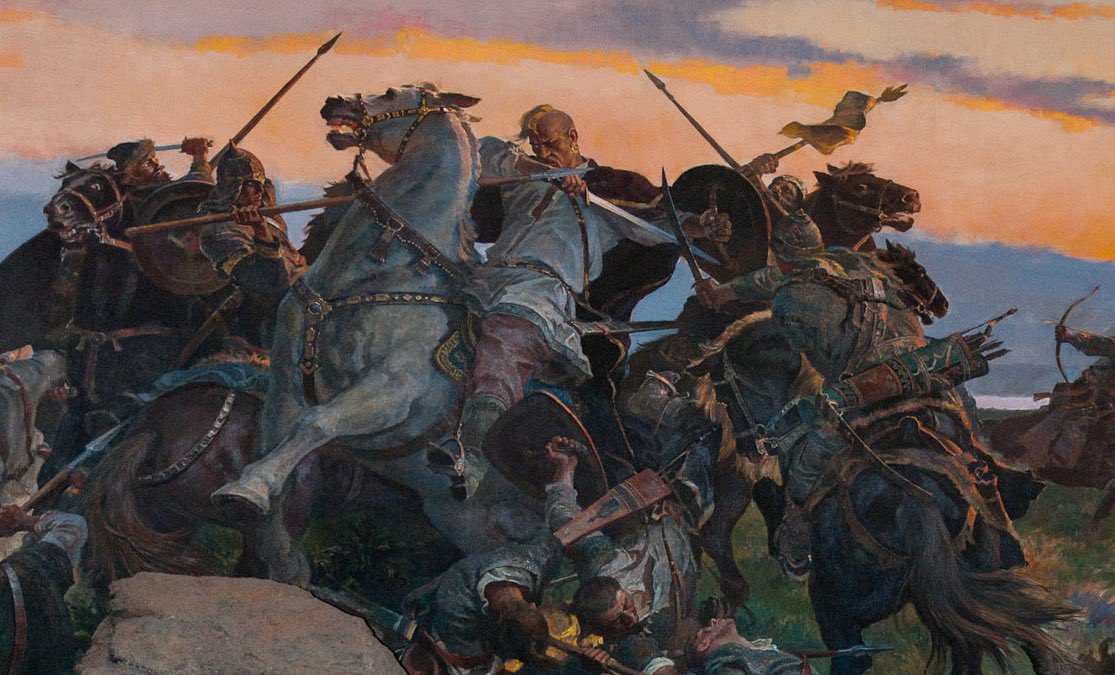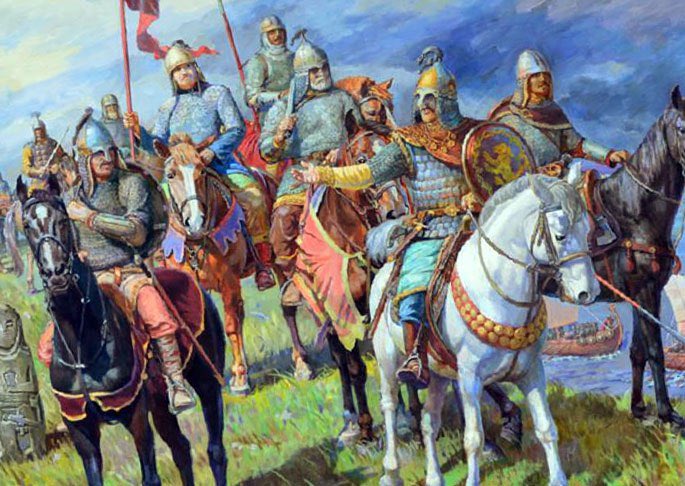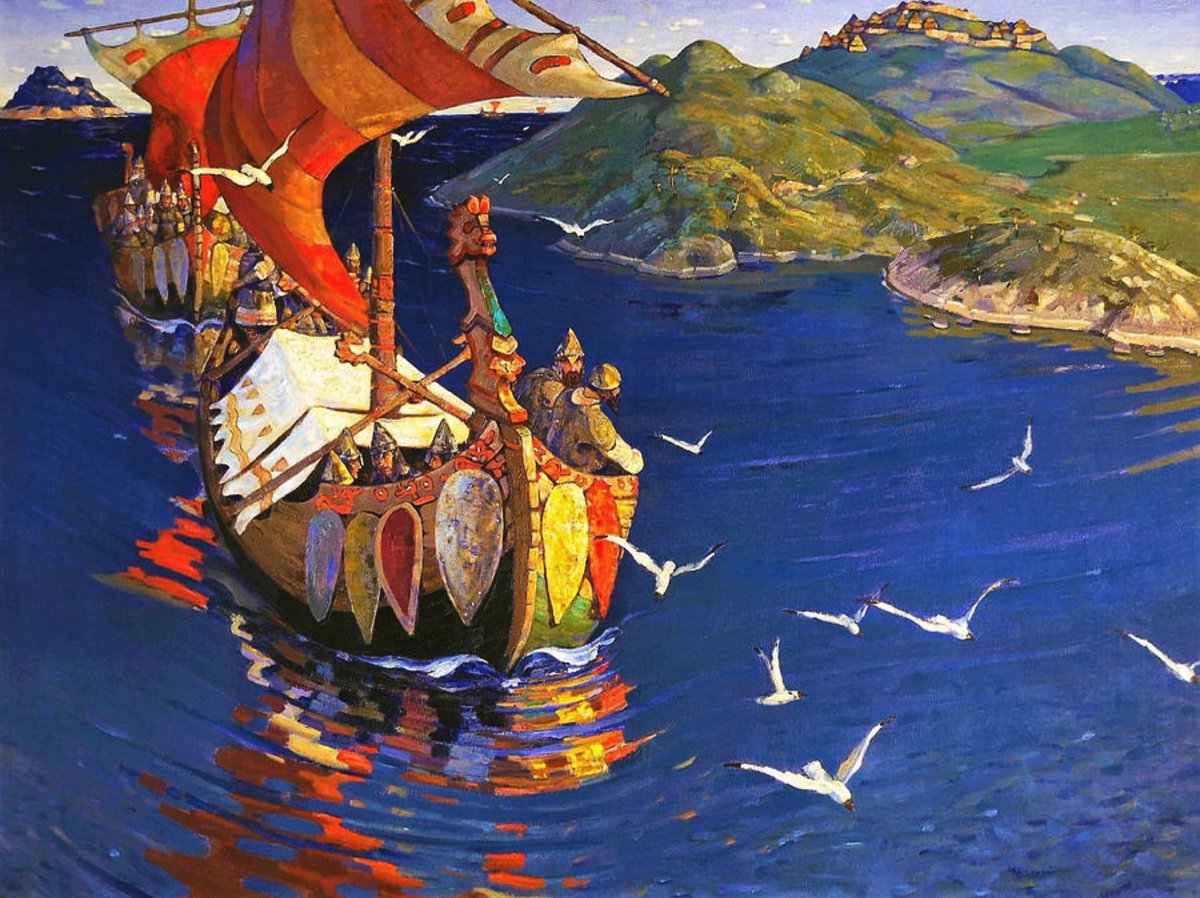
In order to refamiliarize ourselves with the Byzantines after exploring the Kievan Rus, we will take stock of the Empire in 1025. 

At Basil II’s death, Byzantium stood at its medieval zenith. Its borders stretched from Amalfi to the Zagros. The Byzantine heartland was peaceful and prosperous. The Arab world was fractured, Bulgarians defeated, and Rus converted. 

200,000 pounds of gold sat in the treasury and over 130,000 soldiers were under arms across the Empire. Basil’s rule was light and local elites maintained a great deal of autonomy in the Armenian Mountains and Bulgaria. 

Basil also oversaw a flowering of Byzantine culture later named the Macedonian Renaissance for the Dynasty that ruled during that time. Classical art and literature were incorporated into Christian tradition, a forerunner to the Italian Renaissance. 

Although Basil’s rule was prosperous, cracks were appearing in the Empire. The lack of Arab raids allowed for a softening of Anatolia. Lax frontier recruitment rules, magnate weakness after Basil’s purges, and a reliance on the Tagma and mercenaries encouraged Seljuk raiders. 

Basil’s brother Constantine proved to be a reckless ruler, the first of many incapable men to become Basileus. Basil had built an imperial system around his personal ethos and leadership style; without it or a true heir, the system collapsed.
Without emperors like Basil, Tzimiskes, and Nikephoros and a weakened Anatolian military elite, the Varangian Guard & other mercenary units will gain influence not only in the army, but imperial politics. This is most apparent in the story of Harald Hardrada, who we will cover. 

The Byzantine Army remained on the Theme/Tagma model in which each theme would be responsible for organizing and paying for a certain number of troops, usually cavalry. Infantry were called up on a more “militia” basis. 

By 1025 the Imperial government accepted cash instead of soldiers, weakening the martial tradition of the peaceful interior and creating an over-reliance on mercenaries. 

However, this money put less strain on the economy and paid for the large tagmatic formations and mercenaries that conquered Bulgaria and Armenia during Basil’s reign. 

The Byzantines found themselves in a military conundrum. The current system could pay for offensive armies now, but the overstretched empire desperately needed a system that would allow for flexible and responsive defense. The failure to resolve this will cause serious problems.
Byzantine infantry were generally equipped with a large spear and shield. Sometimes soldiers had axes, swords, or plumbata (lead darts) as well. A quilted or leather jacket and crude helmet were standard, although some wealthier soldiers wore lamellar or chain mail. 

The backbone of the Byzantine Army, the lightly armored infantry, relied on their organization, discipline, and superb training to overcome their opponents. These spearmen were supported by archers and other skirmishing troops. 

Byzantine cavalry were the cream of the military. Cataphracts encased in armor, bearing lance, sword, and mace astride a massive war horse, were used to smash enemy formations and send them flying. Such soldiers were incredibly expensive to train and equip. 

Cataphracts never became a large part of the army and were used sparingly to increase the effect of their devastating charge. The Byzantines supplemented their native heavy cavalry with lighter armed horsemen from Armenia and Georgia, steppe horse archers, and Bedouins. 

Foreign mercenaries didn’t just serve in the cavalry; many Armenians, Franks, Slavs, and others fought on foot alongside the Byzantines. Contemporary sources comment on the multiethnic character of the army. 

One of the largest, and by far the most impactful foreign contingent, was the Varangians. Basil’s original 6,000 had all gone by 1025, but the formation was integrated into the army structure. 

The Varangians were divided into three main groups; Naval, Tagma, and the Imperial Bodyguard. We will go into depth on the organization of the Varangians in another thread.
We know so much about the Byzantine army thanks to military manuals that have survived to present day. Nikephoros’ Praecepta Militaria and Basil’s Tactika are excellent resources to examine Byzantine military life according to those who lived it. 

In the coming decades the Byzantine Empire will face new threats; Pechenegs, Normans, and the Seljuks. These new enemies will present new challenges for the Byzantine military and force significant adaptation under the Komnenian Dynasty. 

Before we can touch on the resurgence of the Empire under the Komnenians and the Crusades, we must cover the half-century of decline and chaos that culminated at the disaster of Manzikert. 

Despite such troubles, great men will continue to enter the story. Men like the giant Georgios Maniakis and Harald Hardrada will continue the Byzantine fighting spirit and invigorate a military response to enemies that smelled blood in the water as the Empire stumbled. 

To understand how the Empire struggled forward as internal strife & unadvised policy weakened it we need to go to the source of the issues. The palace politics of the Paphlagonian Dynasty will be the subject of our next thread & we will cover the imperial mess Basil left. 

• • •
Missing some Tweet in this thread? You can try to
force a refresh



















